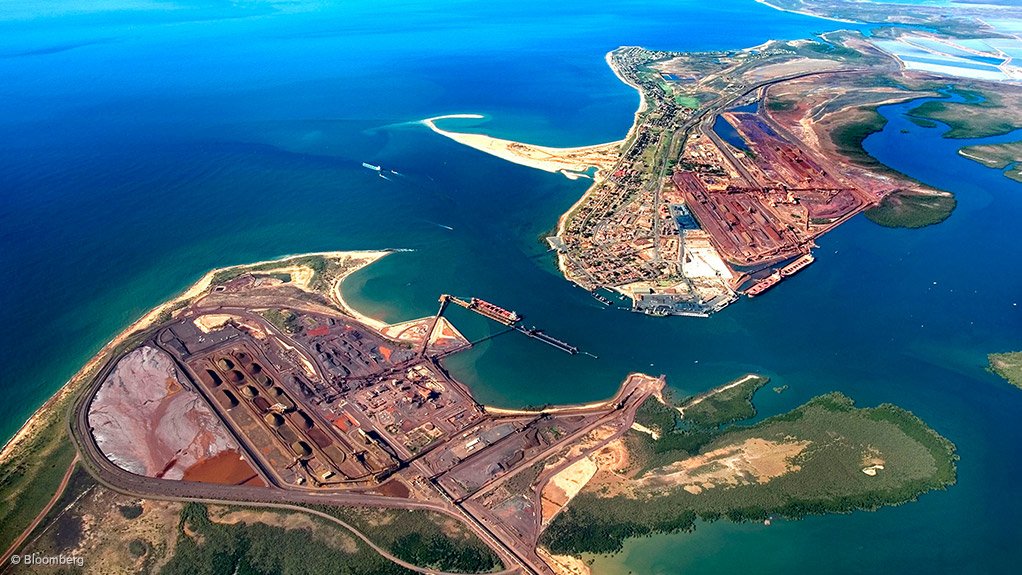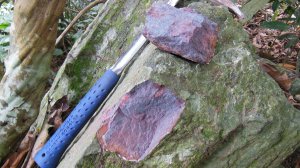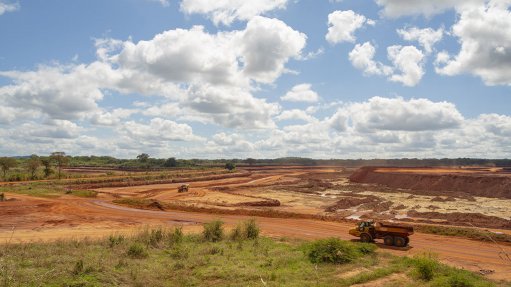Central Africa highlighted as key region



RESOURCE OUTLOOK Equatorial Resources’ exploration activities have defined a resource of 917-million tonnes at 31.4% iron for the Mayoko-Moussondji project
DRIVING REGIONAL GROWTH The Central African iron-ore region has similar potential to Western Australia’s Pilbara region, which drives 25 mines, five ports and five railway systems
Photo by Bloomberg
Central Africa could become an “economic engine” for the African continent, as the region has similar potential to Western Australia’s Pilbara mining region, which currently produces about 30% of the world’s iron-ore, states ASX-listed iron-ore explorer and developer Equatorial Resources.
“Pilbara has driven 25 mines, five ports and five railway systems, all operating as a result of iron-ore mined and exported from the region,” highlights CEO John Welborn, reiterating that a similar scenario could emerge in Central Africa, as well as West Africa, in future, owing to the regions’ “elephant-sized” iron-ore deposits.
Equatorial Resources is developing two 100%-owned large-scale iron-ore projects in the Republic of Congo, which are both highly prospective, with significant scale potential.
The Mayoko-Moussondji iron-ore project is located in the south-west region of the Congo, with access to an existing railway line running directly to the deep- water port of Pointe-Noire, while the Badondo iron-ore project, located in the north-west of the Congo, is situated among a cluster of significantly large iron-ore projects. These projects include Australian iron-ore developer Sundance Resources’ Mbalam-Nabeba project, Central Africa-focused iron-ore developer Core Mining’s Avima project, and the Gabon government’s Belinga project.
“When combined, these regional deposits have the potential to become a globally significant iron-ore-producing province,” says Welborn.
“In light of this, Equatorial maintains the view that this is the region in Africa where iron-ore projects will crystallise,” he asserts, adding that China continues to grow at a rapid rate and Dubai, in the United Arab Emirates, is expanding significantly, with these emerging economies having an “insatiable appetite” for iron-ore.
Therefore, Welborn believes the demand for iron-ore will continue well into the future.
Projects in Progress
Equatorial stated in its June quarterly report that it was completing the Joint Ore Reserves Committee-compliant prefeasibility study (PFS) for the Mayoko-Moussondji project. According to the report, the company expected the study to be completed in the third quarter of this year.
Consulting firms WorleyPar-sons and Orelogy were conducting the study and will incorporate a revised mine plan based on the upgraded resource of near-surface hematite material, rail and port advancements, and other project refinements, according to Equatorial’s report.
The PFS will include the investigation of opportunities to reduce the project’s capital requirements through the use of leasing and build-own-operate contracting solutions.
Equatorial’s exploration activities have defined a resource of 917-million tonnes at 31.4% iron, which includes a surface hematite resource of 182-million tonnes. The surface hematite resource consists of friable mineralisation, which is easily upgraded to a premium iron product, expected to grade above 64% iron.
T
he Congo government awarded Equatorial a 25-year mining licence for Mayoko-Moussondji earlier this year and the company had hopes to conclude the related negotiations, approval and signature for the project’s mining convention agreement in the third quarter.
Further, having last year received two additional exploration licences – the Moussondji-fer Ouest exploration licence and the Moussondji-fer Est exploration licence – Equatorial conducted a geological mapping mission to Moussondji Ouest, 50 km south-west of the Makengui prospect, in the second quarter.
The mapping results confirmed that the tenement area is of a similar geological construction to Mayoko-Moussondji, while several target areas were identified where outcropping iron-ore was visible. Rock samples were collected and further geological interpretation, including the assay results of the collected samples, was provided in the third quarter, according to the company’s report.
Meanwhile, Welborn states that the Badondo iron-ore project has an estimated direct shipping ore (DSO) hematite exploration target of between 370-million tonnes and 620-million tonnes, at a grade of between 58% and 67% iron, as part of a total exploration target of between 2.8-billion tonnes and 4.6-billion tonnes, at a grade of between 35% and 67% iron.
However, it remains uncertain whether further exploration will result in the estimation of a mineral resource, he says.
The company’s initial drilling campaign of 14 holes at Badondo generated an exploration target of between 1.3-billion tonnes and 2.2-billion tonnes of iron mineralisation, which also includes 500-million tonnes of high-grade DSO, expected to grade above 60% iron.
Nevertheless, Equatorial reports that, during the second quarter, a team of geologists and infrastructure professionals from the company completed a field campaign at Badondo, which included a regional review of the infrastructure servicing Badondo, further mapping of outcropping hematite areas on the Badondo ridge line and the development of a preferred model enabling large drilling rigs to access Badondo.
“The campaign was designed to support the ongoing planning for a resource definition drilling programme designed to convert the exploration target into mineral resources,” the company stated in the report.
Welborn concludes that, following the campaign’s success, Equatorial is developing a clearer model for preferred access to Badondo to support future resource definition drilling, while company geologists are selecting key target areas for drilling along the Badondo ridge line.
Comments
Press Office
Announcements
What's On
Subscribe to improve your user experience...
Option 1 (equivalent of R125 a month):
Receive a weekly copy of Creamer Media's Engineering News & Mining Weekly magazine
(print copy for those in South Africa and e-magazine for those outside of South Africa)
Receive daily email newsletters
Access to full search results
Access archive of magazine back copies
Access to Projects in Progress
Access to ONE Research Report of your choice in PDF format
Option 2 (equivalent of R375 a month):
All benefits from Option 1
PLUS
Access to Creamer Media's Research Channel Africa for ALL Research Reports, in PDF format, on various industrial and mining sectors
including Electricity; Water; Energy Transition; Hydrogen; Roads, Rail and Ports; Coal; Gold; Platinum; Battery Metals; etc.
Already a subscriber?
Forgotten your password?
Receive weekly copy of Creamer Media's Engineering News & Mining Weekly magazine (print copy for those in South Africa and e-magazine for those outside of South Africa)
➕
Recieve daily email newsletters
➕
Access to full search results
➕
Access archive of magazine back copies
➕
Access to Projects in Progress
➕
Access to ONE Research Report of your choice in PDF format
RESEARCH CHANNEL AFRICA
R4500 (equivalent of R375 a month)
SUBSCRIBEAll benefits from Option 1
➕
Access to Creamer Media's Research Channel Africa for ALL Research Reports on various industrial and mining sectors, in PDF format, including on:
Electricity
➕
Water
➕
Energy Transition
➕
Hydrogen
➕
Roads, Rail and Ports
➕
Coal
➕
Gold
➕
Platinum
➕
Battery Metals
➕
etc.
Receive all benefits from Option 1 or Option 2 delivered to numerous people at your company
➕
Multiple User names and Passwords for simultaneous log-ins
➕
Intranet integration access to all in your organisation



















